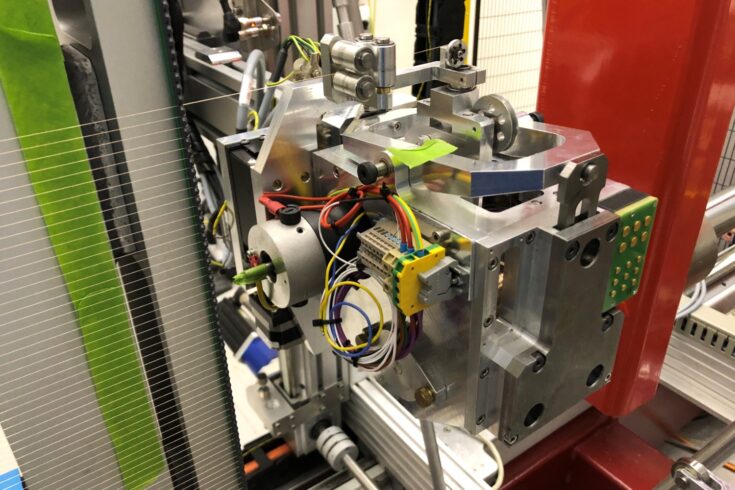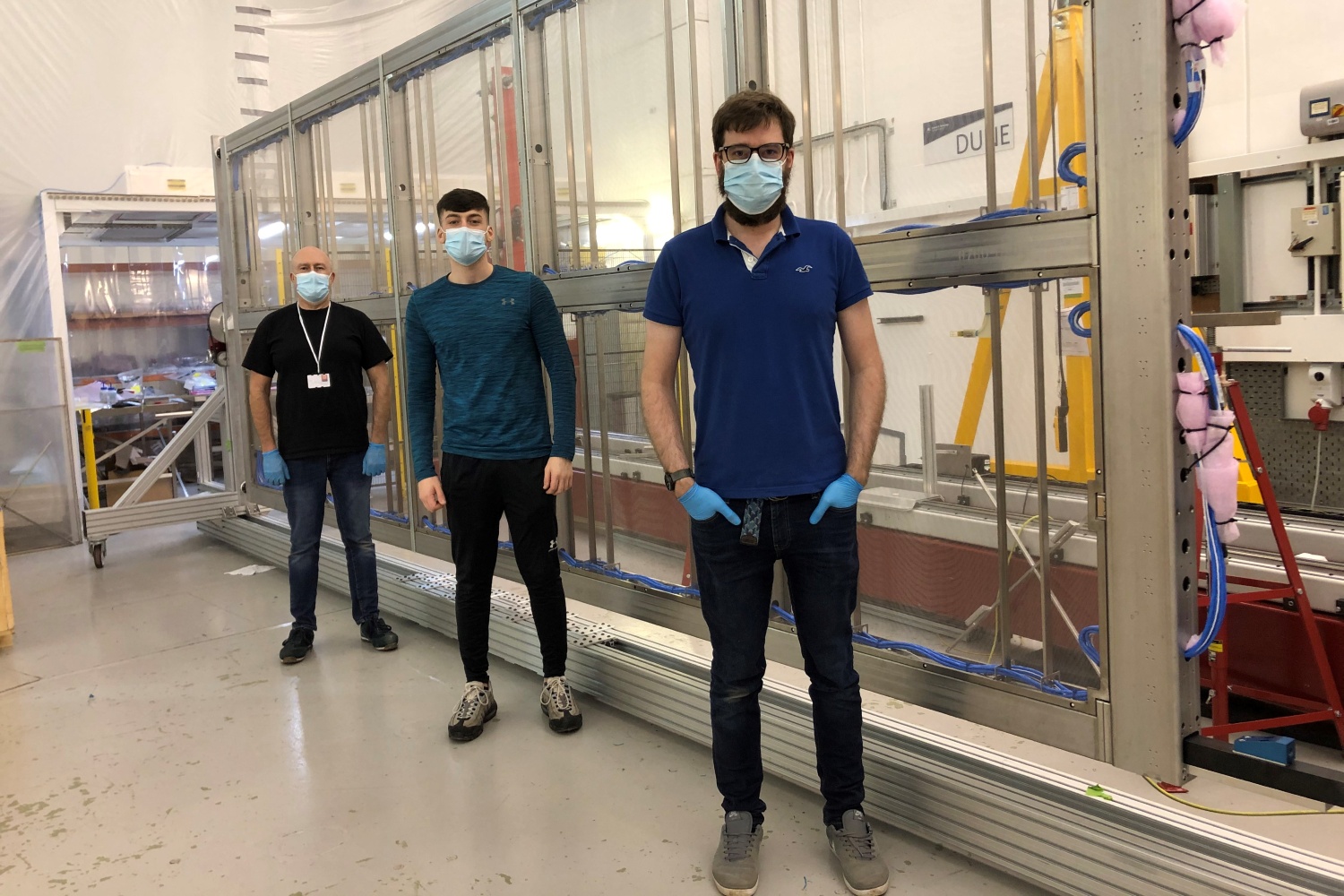UK scientists build core components of global neutrino experiment
9 Feb 2021 10:51 AM
Engineers and technicians in the North West have started production of a key piece of equipment for a major international science experiment.

X-Layer winding head: Designed by engineers in Technology Department based at Daresbury Laboratory, and shown in-action winding a wire around the end of the ProtoDUNE2 APA (credit: STFC).
The UK government has invested £65 million in the Deep Underground Neutrino Experiment (DUNE) hosted by Fermilab in the US. It will study elusive neutrinos in a bid to advance our understanding of the origin and structure of the Universe.
As part of this investment, the UK is delivering a series of vital detector components. The components are being built at the Science and Technology Facilities Council’s (STFC) Daresbury Laboratory, located at Sci-Tech Daresbury in the Liverpool City Region.
A big contribution
Scientists will capture the neutrinos in detectors containing 17,000 tons of liquid argon.
The tiny electrical signals of neutrino interactions will be read out by Anode Plane Assemblies (APA). APAs are huge rectangular planes covered with thousands of copper-beryllium wires, about the width of a human hair.
Each APA stands at an impressive 2.3m by 6.3m – making them the largest individual components for DUNE, and they have to be built with millimetre precision.
Daresbury Laboratory – with its university partners in the North West – will ultimately produce 150 APAs for DUNE.
To meet this need, a large purpose-built APA factory was created at Daresbury inside a former accelerator hall, and 20 specific jobs were created for this task.

APA Mesh Crew R-L: Dan Salisbury, Adam Jones, Nick Clague (credit: STFC)
Making excellent progress
The Daresbury team has now started the production of the first APA for ProtoDUNE-II.
The high-precision APAs will first undergo cryogenic testing in the ProtoDUNE-II detector at the European Organization for Nuclear Research (CERN), before the full set of APAs for DUNE are built. The process will take several years to complete.
Executive Chair of STFC Professor Mark Thomson, yesterday said:
It is impressive that the project team continues to made excellent progress in such a challenging year.
This development means that 2021 should be the year of the Final Design Review and beginning of ‘mass’ production of APAs at Daresbury – a huge milestone for everyone involved and a major step towards the construction of this incredibly exciting neutrino experiment.
I am deeply proud of the team at Daresbury for how hard they have continued to work in difficult circumstances.
The mystery of neutrinos
Physicists from the universities of Liverpool and Manchester provide the scientific leadership of the project.
DUNE spokesperson Professor Stefan Soldner-Rembold, of the University of Manchester yesterday said:
These detector components will play a key role in unravelling the mystery of neutrinos and their role in the formation of the Universe.
The excavations of the underground facilities in South Dakota have recently started, and Professor Soldner-Rembold added:
The international team of neutrino physicists working on DUNE is excited to welcome the first of the large detector components built by the UK – the biggest non-US contributor to this global experiment.
DUNE collaboration
UK involvement with the DUNE collaboration is through STFC and 14 universities:
- Birmingham
- Bristol
- Cambridge
- Durham
- Edinburgh
- Imperial
- Lancaster
- Liverpool
- UCL
- Manchester
- Oxford
- Sheffield
- Sussex
- Warwick.
Further information
About DUNE
DUNE is a flagship international experiment run by the US Department of Energy’s Fermilab that involves over 1,000 scientists from 31 countries.
Using a particle accelerator, an intense beam of neutrinos will be fired 800 miles through the earth from Fermilab in Chicago to the DUNE experiment in South Dakota. There, the incoming beam will be studied using DUNE’s liquid-argon detector.
DUNE will study the behaviour of particles called neutrinos and their antimatter counterparts, antineutrinos. This could provide insight as to why we live in a matter-dominated universe and inform the debate on why the Universe survived the Big Bang.
DUNE will also:
- watch for neutrinos produced when a star explodes, which could reveal the formation of neutron stars and black holes
- investigate whether protons live forever or eventually decay, bringing us closer to fulfilling Einstein’s dream of a grand unified theory.